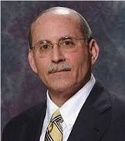Marc Petock
Sometimes it is interesting to go back and look at the past to move forward. Here is an article I wrote for the December 2019 issue of Automatedbuildings.com. How far have we moved forward? Are we still moving forward?
My answer is absolutely.
And our journey continues.
December 2019
The age of IoT and digital transformation has reshaped every industry from manufacturing to entertainment to hospitality. No industry is immune, and most certainly not ours.
The past several years have demonstrated that digital transformation and the evolving of IoT within the built environment continue an upward climb, delivering undeniable value to owners, operators, and now occupants alike. The rate of change can be attributed not only to diverse technologies and innovation, but also to changes driven by connectivity, the Edge, IP, the value of data, the Cloud, cyber security and expanded business outcomes. One thing is for certain, it is no longer a matter of “should we, but “why aren’t we and when will we?”
With this evolution, we’ve seen the emergence of more advanced buildings and what they can deliver. Instead of being static structures, digital transformation and IoT have turned facilities into dynamic environments fostering innovation, improving operational performances, and creating meaningful, occupant experiences.
Alongside of this transformation has been the evolution of how we identify the “building platform”. We first began this journey with what we called the Building Automation Platform. Simply put, Building Automation Platforms control and monitored the building’s mechanical and electrical equipment such as HVAC, lighting, power, and security systems.
Next, as buildings became more technology-enabled, we moved to the Building Integration Platform. The Building Integration Platform acted as an integration framework composed of a collection of technologies, applications, and services which formed a middleware framework that enabled for the integration of systems and critical equipment functions across the building and an enterprise.
Then, as we added “smart” and “intelligent” to the equation we moved to the Building Operating Platform.
The Building Operating Platform, connected, integrated, and correlated data from facility equipment, systems, and devices, and enabled facility personnel and operators to adopt a converged and common platform to achieve automation, integration, energy, and operational efficiencies. It provided facility personnel and operators with a system from which to manage and understand how their buildings are performing, manage energy and make use of a common user interface to all systems, devices, data, and management tools.
Enter today, what I call the Building Engagement Platform. Our buildings are no longer passive places where we just work. They are digitally enabled, and they are social. They have become places of engagement in which there are interactions between occupants and their surrounding environment, communications between IT and OT, and exchanges among HR and facility management all to create meaningful experiences and make the workplace smart, comfortable, safe, productive, healthy, secure, reach higher levels of performance and be adaptive to multifunctional environments.
The Building Engagement Platform combines previous platform generations on a flattened, secured IP horizontal architecture with the touchpoints, tools, ingestion of real-time data streams, and workplace applications. It streamlines efficiencies, manages workflows, and allows for collaboration and information sharing to meet occupant experience expectations, drive new service delivery and produce new outcomes. The most important perspective resulting from the building engagement platform is the relationship between technology and outcomes and the roles each play in driving value.
Our engagement with buildings and facilities is constant and far from finished. The building platform journey is continuous. Whether you are an owner, operator, service provider or occupant, you have expectations when it comes to an engaging experience. The role of IP and IoT, as well as transformation, is essential in this evolution and continues to change the market. Buildings that don’t follow this evolution will have decreased value.
COME JOIN ME AND AN ALL-STAR PANEL
I am delighted to be leading an open educational session and panel discussion at AHR Expo 2023. The session entitled “The Move from Smart Buildings to Smarter Buildings” takes place on Tuesday, February 7, 2023, from 10:30 am – 11:30 am in room B309 within the Georgia World Congress Center. The session is complimentary and open to all.
Joining me are my good friends and industry vets @Ed Merwin, Director Strategic Business, Tridium, @Gary Ament, Solutions Architect, FSG Smart Buildings, @Larry Melton, President & CEO, The Building People, @Paul Maximuk, Senior Consultant Intelligent Buildings at Newcomb & Boyd, LLP, @Richard Wendland, Senior Associate, Manager of Operational Intelligence, Burns & McDonnell, @Steven Dodd, President/Partner at HVAC Concepts, and @Trevor Morrison, Vice President Energy & Connected Real Estate, The Building People.
Topic areas the group will address include: What is a smarter building? How is it different from a smart building? What are the characteristics and attributes of a smarter building? Is planning and designing different? Will the adoption of smarter buildings occur faster than that of a smart building? How do new protocols help drive smarter buildings? Are outcomes different? And more.


